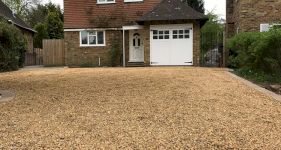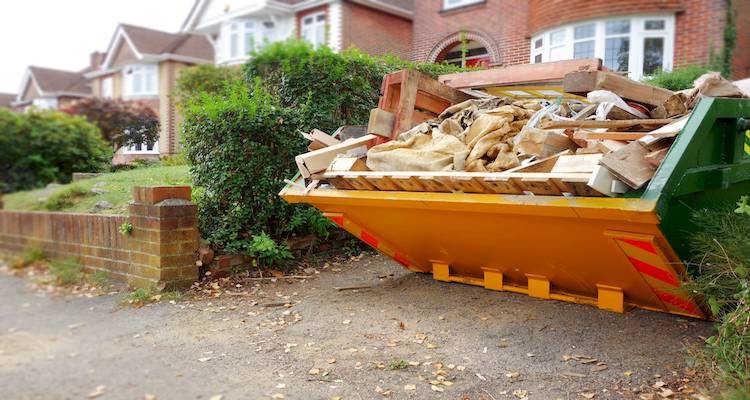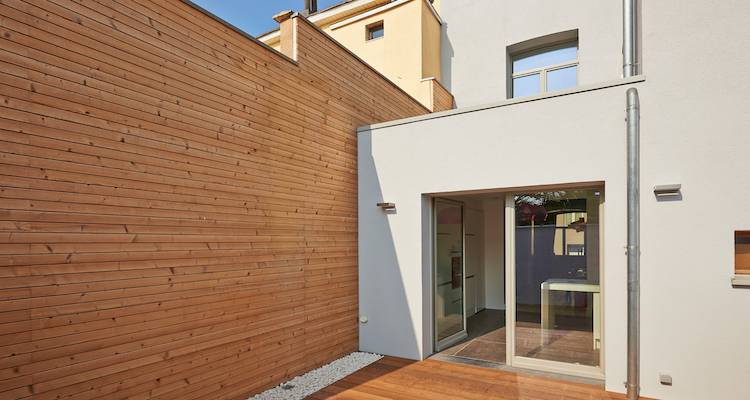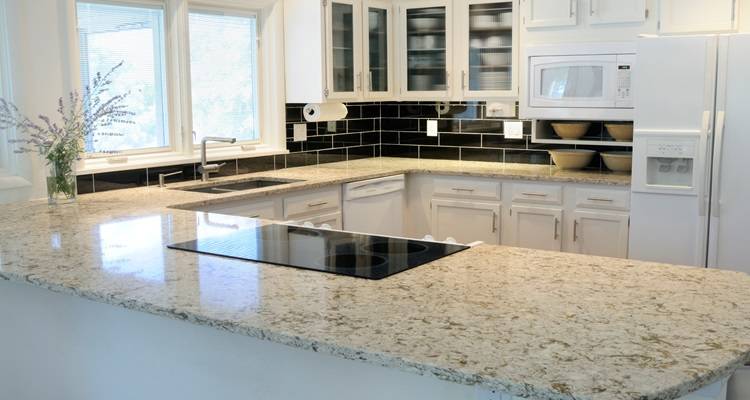Pet Flap Installation Cost
- The average cost to fit a pet flap is around £100.
- Most jobs take 2 hours to complete.
- Pet flap installation costs in 2026 by door type and material.
- How long pet flap fitting takes and what’s typically involved.
- How to find a local pet flap fitter using MyJobQuote.
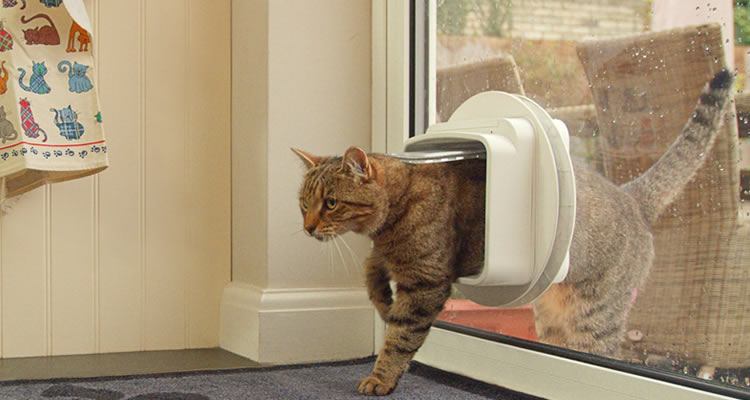
£100
Table of Contents
- How Much Does Installing a Pet Flap Cost?
- Labour Costs and Time Frames
- Cat Flap Installation Costs By Door and Wall Type
- Types of Cat and Dog Flaps
- What?s Involved in Fitting a Pet Flap?
- What Size Pet Flap Do I Need?
- Will Installing a Pet Flap Affect My Insurance?
- Pet Flap Repair and Maintenance
- Pet Flap Removal
- Checklist: Hiring a Pet Flap Installer
How Much Does Installing a Pet Flap Cost?
If your cat or dog often gets locked out, or if you are sick of draughts coming into the home because the back door is almost always open – then fitting a dog or a cat flap could be the answer to all of your problems!
Pet flaps can be fitted into almost any type of door — wood, uPVC, composite or even glass — though some materials take longer to work with and cost a little more to fit.
Pet flaps are fantastic as they allow you to no longer worry about letting your cat or dog in or out at times that are inconvenient to you. Plus, with modern technology and things such as microchip-detecting cat and dog flaps available, there’s no need for you to worry about other animals gaining access to your home.
They also help cut down on scratched doors, little accidents on the floor and bored pets pacing by the back door, because they can nip out for the toilet or a sniff round the garden whenever they like.
Cat or dog flaps can vary a lot in price. It mostly comes down to three things: the type of door or wall you’re cutting into, the size of the flap, and how high-tech you go.
As a rough example, having a flap fitted into a simple wooden door might cost around £80 in total, while putting one into a glass door is closer to £160 because of the extra work and materials.
On the product side, a basic manual flap with a simple swinging door usually comes in at around £10–£20. If you’d rather go for a magnetic, automatic or microchip model that only opens for your own pet, you’re looking more at roughly £50–£250.
It’s also worth checking what kind of weather sealing the flap has. Better models with brush strips or magnetic seals might cost a little more, but they’ll do a much better job of keeping draughts, rain and damp out of your home.
Pet Flap Installation Prices
The following table indicates the prices of installing a small, medium, and large pet flap into various surfaces.
Please refer to the measurements below to determine whether you will be looking at purchasing a small, medium, or large pet flap.
- Small: 20cm by 15cm or under.
- Medium: 30cm by 20cm or under.
- Large: Over 30cm.
| Job Description | Duration | Material Costs | Labour Costs |
|---|---|---|---|
| Small pet flap fitting on uPVC door panel | 1 hour | £40 | £40 |
| Replace glass door panel with uPVC panel and fit small-sized pet flap | 1.5 hours | £80 | £70 |
| Small pet flap fitted into external wall | 1.5 – 2 hours | £120 | £120 |
| Small pet flap fitted into glass French door | 2 – 3 hours | £80 | £80 |
| Small pet flap fitting on wooden door | 1 hour | £40 | £40 |
| Small pet flap fitted into composite doors | 1.5 hours | £80 | £50 |
| Medium pet flap fitting on uPVC door panel | 1 – 1.5 hours | £45 | £55 |
| Replace glass door panel with uPVC panel and fit medium-sized pet flap | 1.5 – 2 hours | £90 | £90 |
| Medium pet flap fitted into external wall | 2 – 3 hours | £175 | £200 |
| Medium pet flap fitted into glass French door | 3 – 4 hours | £90 | £120 |
| Medium pet flap fitting on wooden door | 1 – 1.5 hours | £50 | £50 |
| Medium pet flap fitted into composite doors | 2 hours | £80 | £70 |
| Large pet flap fitting on uPVC door panel | 1.5 – 2 hours | £50 | £70 |
| Replace glass door panel with uPVC panel and fit large-sized pet flap | 2 hours | £100 | £120 |
| Large pet flap fitted into external wall | 3 – 4 hours | £200 | £250 |
| Large pet flap fitted into glass French door | 4 – 5 hours | £100 | £150 |
| Large pet flap fitting on wooden door | 1.5 hours | £60 | £65 |
| Large pet flap fitted into composite doors | 2 – 2.5 hours | £90 | £100 |
Labour Costs and Time Frames
The cost of labour for fitting a pet flap depends on a number of variations, including the type of pet flap and the surface on which it is being installed. Some surfaces, like glass, take longer to work with, so the job takes more time and the labour goes up.
A simple installation into a regular uPVC or wooden door would take around one hour and would cost approximately £40 to £50. A more complex installation into a surface such as a glass French door or an external wall would take somewhere between 2-4 hours and would cost approximately £80 to £120.
Lots of people start it as a DIY to save a bit, but it often takes longer than planned and can end up costing more if the door gets damaged.
Do I require a trade person to fit a dog flap into a double glazed patio door?
With this in mind, it is important to consider hiring a professional tradesperson to install your pet flap. Although it may cost you a little bit more, it would save you a lot of stress over doing it yourself. Also, you know that you will be getting the job done effectively and correctly.
Just want it sorted? We have a range of pet flap fitters all set to give you free quotes and take care of the fitting for you.
Cat Flap Installation Costs By Door and Wall Type
Where you put the flap has a big impact on price. Fitting into a simple uPVC or wooden panel is usually the cheapest option, while glass, windows and solid walls sit at the top end of the scale.
Below, you’ll find typical prices for each main fitting type, plus a quick average so you can see what you’re likely to pay.
Cost to Install Cat Flap in a uPVC Door Panel
If you’re looking at the cat flap in uPVC door cost, this is often the most budget-friendly option. On average, expect to pay around £100 to have a flap fitted into a flat uPVC door panel, depending on the size.
| Job type | Material costs | Labour costs |
|---|---|---|
| Small pet flap fitting on uPVC door panel | £40 | £40 |
| Medium pet flap fitting on uPVC door panel | £45 | £55 |
| Large pet flap fitting on uPVC door panel | £50 | £70 |
Cost to Install Cat Flap in a Wooden Door
Fitting into a standard timber door is similar money to uPVC. As a rough guide, a wooden door cat flap installation averages around £100, with smaller flaps at the lower end and large flaps costing a bit more.
| Job type | Material costs | Labour costs |
|---|---|---|
| Small pet flap fitting on wooden door | £40 | £40 |
| Medium pet flap fitting on wooden door | £50 | £50 |
| Large pet flap fitting on wooden door | £60 | £65 |
Cost to Install Cat Flap in Glass Doors and Windows
Glass is more involved, as the panel is replaced with a new unit that has a pre-cut hole. That’s why the installing cat flap in glass door cost, the dog flap in glass door price and the cat flap in window cost are all higher than simple uPVC or timber jobs.
Realistically, you’re looking at around £210 for a flap fitted into a glass French door, depending on flap size.
| Job type | Material costs | Labour costs |
|---|---|---|
| Small pet flap fitted into glass French door | £80 | £80 |
| Medium pet flap fitted into glass French door | £90 | £120 |
| Large pet flap fitted into glass French door | £100 | £150 |
Cost to Install Cat Flap in an External Wall
Wall fittings take more time, as the installer has to cut through brickwork and often line the tunnel. Because of this extra work, the run-of-the-mill cost to fit a cat flap in a wall comes in at around £375.
| Job type | Material costs | Labour costs |
|---|---|---|
| Small pet flap fitted into external wall | £120 | £120 |
| Medium pet flap fitted into external wall | £175 | £200 |
| Large pet flap fitted into external wall | £200 | £250 |
Cost to Install Cat Flap in a Composite Door
Composite doors are strong and well insulated, so cutting into them needs a bit more care. Because of this, the average cost to fit a flap in a composite door is around £150, with larger flaps at the higher end.
| Job type | Material costs | Labour costs |
|---|---|---|
| Small pet flap fitted into composite doors | £80 | £50 |
| Medium pet flap fitted into composite doors | £80 | £70 |
| Large pet flap fitted into composite doors | £90 | £100 |
Relating to intruder danger, what sort of doors would be best for having a pet flap installed? Any help would be greatly appreciated.
Types of Cat and Dog Flaps
If you’re happy doing the fitting yourself, you might just want to know what each flap costs to buy on its own. Prices will differ quite a lot. How much you'll pay depends on how secure or high-tech you go - from simple two-way doors to smart microchip models that only open for your pet.
Classic Pet Flap Cost
Average cost: £10–£25
The standard 2-way flap is the cheapest option and does the job for most pets. It swings both ways and gives your cat or small dog freedom to nip in and out as they please. Ideal if you live somewhere quiet with few visiting animals.
Pros
- ✔ Cheap and easy to fit yourself
- ✔ Works for cats and small dogs
Cons
- ✖ No control over other pets coming in
- ✖ Lets in draughts if not sealed well
Lockable Pet Flap Cost
Average cost: £10–£30
A lockable flap is a small step up. You can slide it shut at night or when you’re out, so your pet stays in (or out) as needed. It’s simple, practical, and ideal if you like a bit of extra control without spending loads.
Pros
- ✔ Budget-friendly with basic security
- ✔ Easy to lock and unlock manually
Cons
- ✖ Still open to other pets when unlocked
- ✖ Basic weather protection
Magnetic Pet Flap Cost
Average cost: £20–£80
These use a magnetic tag on your pet’s collar so the flap only opens for them. It’s a good middle-ground if you want more control but don’t need anything too fancy. Just note, some nearby pets might have matching tags — it happens!
Pros
- ✔ More secure than a basic flap
- ✔ Affordable compared to tech models
Cons
- ✖ Can take a moment to unlock
- ✖ Some tags share the same magnetic code
Infrared Pet Flap Cost
Average cost: £50–£100
Infrared flaps use a coded key or collar tag that sends a signal to open the door. It’s clever and helps keep out any random visitors. You can even set up spare keys for friends’ pets if needed. They’re pricier, but they work well for multi-pet homes.
Pros
- ✔ Excellent control over which pets get access
- ✔ Adjustable settings for multiple animals
Cons
- ✖ More expensive upfront
- ✖ Battery-powered – needs occasional checks
Microchip Pet Flap Cost
Average cost: £50–£100
The top-end choice. A microchip cat flap or dog flap recognises your pet’s unique chip and opens just for them — not the neighbours’ pets. Great for security, and you can program multiple pets if needed. It’s the priciest, but also the most reliable and weatherproof.
Pros
- ✔ Maximum security and convenience
- ✔ Works automatically for chipped pets
Cons
- ✖ Higher cost than other types
- ✖ Requires batteries or power source
What’s Involved in Fitting a Pet Flap?
Getting a pet flap fitted is a fairly speedy job. Having said that, it does need care, especially if you’re cutting into glass or composite doors. Here’s a quick look at what happens when you hire a fitter to do it properly for you.
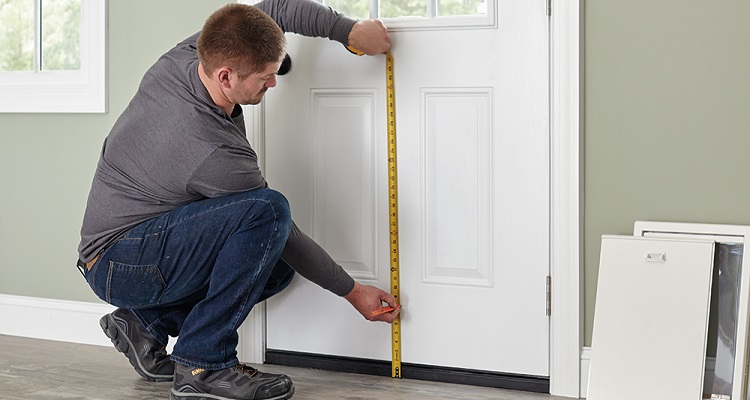
Before the Job Starts
- Measuring up: The fitter will measure your door or wall, check the height that suits your pet, and mark up exactly where the flap will sit.
- Confirming the type: They’ll double-check the material (wood, uPVC, glass, or brick). Also, they’ll make sure the pet flap you’ve chosen is compatible before cutting anything.
During the Job
- Cutting the opening: Using a jigsaw or glass-cutting tool (which depends on the surface), they’ll carefully cut a hole. And to stop splinters or cracks, your fitter will smooth down the edges.
- Fitting the flap: The pet flap is fixed into place and sealed all the way around to stop draughts or leaks. On glass jobs, a new pane with a pre-cut hole is fitted instead of cutting your existing one.
After the Job
- Final inspections: Your installer will double check the flap opens as it should and closes tightly. If it’s a microchip or magnetic model, they’ll take a look at the sensor to see if it’s working correctly.
- Clean-up and handover: Any dust or offcuts, they’ll clear away. Next, you’ll be shown how to use and maintain the flap — like how to lock it when needed.
Fittings take under 2 hours. However, if yours is a glass or wall installation, expect it to take a bit longer. Either way, it’s a one-day job that makes life a lot easier for you and your pet.
What Size Pet Flap Do I Need?
Don’t worry too much about the size label on the box. Instead, focus on how your pet gets about. Take a look at these quick tips – they’ll help you pick a flap that fits them comfortably now as well as when they’re grown up.
- Measure your pet standing up. Measure from the floor to the top of their back between the shoulder blades. This will give you a pretty good idea of where the top of the opening should sit.
- Add a bit of wiggle room. Aim for an opening that’s around 2 inches taller and wider than your pet. This way, they’ll be able to walk through without squeezing or bumping their sides.
- Get the step-over right. The gap between the floor and the bottom of the flap (the “step over”) should be as low as you can make it. And it shouldn’t be any more than about a third of your pet’s height. On doors, you’ll need at least 3 inches. This keeps the door strong.
- Check collar clearance. The last thing you want is for their collar or tag to catch on the top edge every time they push through! So, you’ll want to make doubly sure there’s enough space above their back.
- Do a doorway test. Block off part of a doorway to your planned width and call your pet through. If they hesitate, shuffle or have to turn sideways, you need a bigger flap.
- Use a cardboard template. Cut the size you’re thinking of out of cardboard. Next, hold it at the right height and let them try it. This is a really easy way to check everything feels right before anyone cuts into the door.
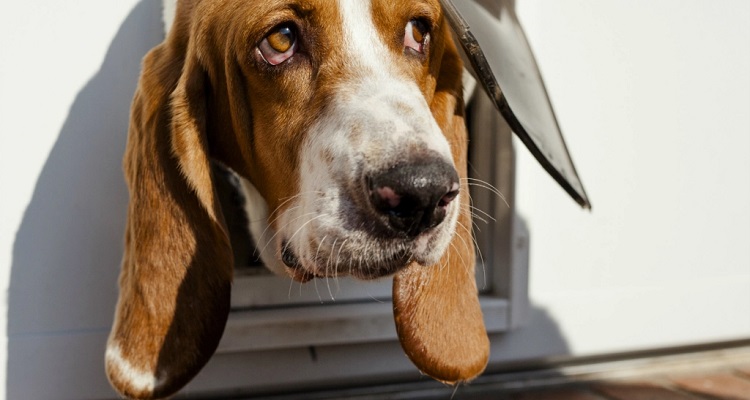
Will Installing a Pet Flap Affect My Insurance?
Installing a pet flap usually won’t change your premium, but it can matter if you ever have to make a burglary claim. Some insurers want to see signs of forced entry, so it’s worth checking your policy small print.
- If there’s no sign of forced entry, your insurer may decide not to pay out.
- Some insurers may also say you didn’t take “reasonable security” measures – especially if keys were left near the flap.
- Another issue with this is that if there is no sign of forced entry, the insurer has to agree that the insured is telling the truth. If there is no proof, then they may not meet the claim.
Would my cat going in and out of her cat flap set off the house alarm?
Pet Flap Repair and Maintenance
One of the most common issues you can come across with a cat flap is that the flap stops working or doesn’t open. This is most common on microchip pet flaps. There are several things that may cause this, but usually, it is because the flap can no longer read the chip on your pet.
Below is a list of things that you can do to potentially repair and maintain your pet flap.
- It is worth starting by checking the battery. Check the batteries first – make sure they’re the right way round, they’ve got some life in them, and they’re sitting properly. A replacement battery will cost around £5 to £15.
- Also, check that the pet flap has been installed properly. Problems can occur if the device is not installed correctly. This is most common on metal doors.
- You should also make sure that there are no electrical disturbances nearby. Make sure the area is clear of flickering lights or anything else that could cause electrical interference.
- Be sure to clean your pet flap regularly to avoid dirt and grime from becoming embedded in any areas of it. This may cause problems down the line if left for too long and could prevent your pet flap from working efficiently and correctly.
- If all else fails, a factory reset may be just the thing that brings your pet flap back to life. Check the instruction manual that came with the pet flap to see the correct procedure for performing a factory reset.
Pet Flap Removal
Perhaps you are looking to remove your pet flap completely. Have you recently moved into a new home with a pet flap installed that you don't want? Or maybe you no longer need a pet flap.
Pet flaps can be taken out, but it does take a bit of work to make the door look right again.
There are a number of ways in which your pet flap can be removed. We have listed some of the best options below.
Remove and Replace the Panel
Depending on the type of door that the pet flap was installed in, you may be able to purchase a replacement panel. This means that you can remove the entire panel that the pet flap was installed into and then replace the entire thing with a new one. This is probably the easiest method of removing a pet flap.
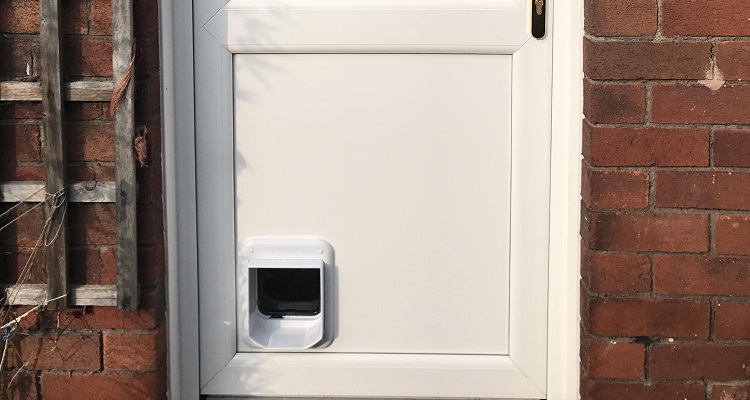
Remove and Cover the Hole
Another option may be to remove the pet flap and then cover the hole and fill the gaps; however, if this is not done properly, it can cause some security risks and may be prone to weather damage.
Replace the Entire Door
Some people may prefer to just replace the entire door completely, but this can incur some heavy costs depending on the type of door that you are looking to purchase.
It is possible to remove a pet flap yourself. However, it is always recommended that you seek professional advice from a tradesperson. A professional will charge around £30 to £80 to remove a pet flap depending on the complexity of the job.
The likelihood is that you will need to replace the entire door or pane of glass. This will incur much higher costs.
Checklist: Hiring a Pet Flap Installer
Consider these key points before you book someone to fit your pet flap:
- Do they regularly fit pet flaps in your type of door or wall? Find out if they’re confident working with uPVC, composite, timber, glass or brick – especially if you’re going through a double-glazed unit or an external wall.
- Who’s supplying the pet flap itself? Some fitters are happy to fit a flap you’ve bought, others prefer to supply and fit the whole lot. If they’re supplying it, check the make, model and warranty so you know what you’re getting.
- Do they have public liability insurance? It’s there to cover damage to your property if something goes wrong while they’re cutting into the door or glass, so it’s always worth asking.
- How will they deal with glass or double glazing? Your fitter will order a new glass unit with a pre-cut hole rather than cutting into your existing panel. This keeps the glazing safe and under warranty.
- Is all sealing and tidying afterwards part of the price? Check that finishing touches are covered in the quote. That’s things like trim, sealant, finishing off rough edges and repainting any small scuffs around the opening.
- Can they show photos or reviews of comparable jobs? Before-and-after pictures and recent feedback from other pet owners will give you a good feel for the quality of their work.
- Will you get a written quote and any guarantee? Ask for the price, what’s included, and how long their workmanship is guaranteed for, all in writing before you say yes.
FAQs
Can I move my pet flap to a new door?
Yes, you can. Most pet flaps can be taken out and fitted into a new door, but it’s not always a simple swap. A new opening needs cutting, sealing and finishing properly, which is best left to a carpenter or glazier.
If you’re already getting a new door, ask your fitter to cut the opening while it’s being installed. It’s cleaner, cheaper, and saves drilling twice.
Can I fit a pet flap myself?
If you’re handy with tools and it’s just a basic wooden or uPVC door, you can fit a simple flap yourself. Just be careful. One wrong cut and you can crack the panel or end up with a hole that’s hard to seal. Anything in glass, double glazing, composite or a brick wall is better left to a pro, or you can end up paying twice.
What are the main benefits of fitting a pet flap?
A pet flap saves you playing doorman. Also, it protects your doors from scratching and biting, and it gives your pet a bit more freedom, too. They can pop out for the toilet, burn off some energy and get a bit of fresh air and mental stimulation. All of this usually means fewer accidents indoors and a calmer, happier cat or dog.
Do I need planning permission to install a pet flap?
No, you don’t. Adding a pet flap is classed as a small home improvement, so you’re fine to go ahead without permission. The only time you’d need to double-check is if you live in a listed building, conservation area, or flat with shared doors.
What’s the best height to fit a pet flap?
The flap should sit roughly in line with your pet’s belly. That way they can step through comfortably without stooping or hopping. If you’re unsure, measure from the floor up to the middle of their stomach and mark that height on the door first.
It sounds simple, but getting that height right makes a huge difference – especially as your pet gets older.
Can I install a pet flap in a rental property?
Only if your landlord says yes. Cutting into a door or wall is a permanent change, so you’ll need their written permission first. Most are fine with it as long as it’s done neatly by a professional and you agree to put things right when you move out.
How long do pet flaps usually last?
Most pet flaps last anywhere from five to ten years if you keep them clean and free of dirt. Microchip models can last just as long, though you’ll need to pop in new batteries every year or so.
If the flap starts sticking, squeaking, or letting in draughts, it’s probably time to replace it. A fresh one is often cheaper than trying to fix a worn-out mechanism.



